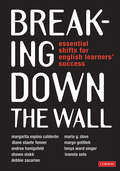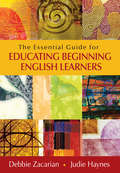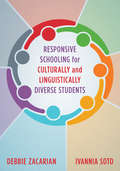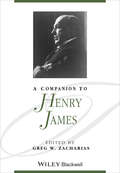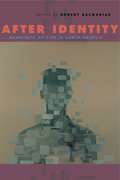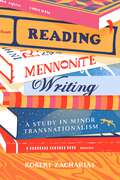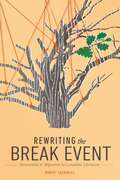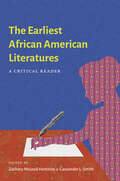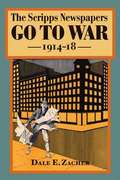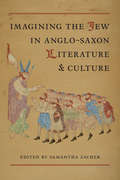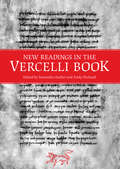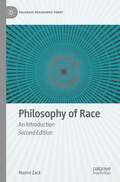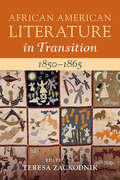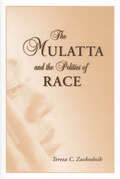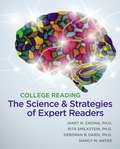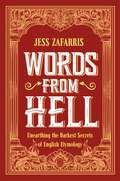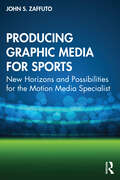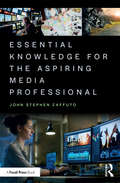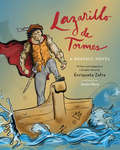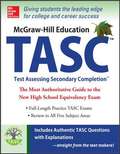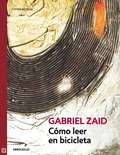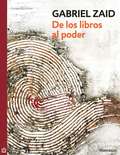- Table View
- List View
Breaking Down the Wall: Essential Shifts for English Learners’ Success
by Debbie Zacarian Maria G. Dove Margarita Espino Calderon Diane Staehr Fenner Tonya W. Singer Margo Gottlieb Ivannia Soto Shawn M. Sinclair-Slakk Andrea HonigsfeldIt was a dark and stormy night in Santa Barbara. January 19, 2017. The next day’s inauguration drumroll played on the evening news. Huddled around a table were nine Corwin authors and their publisher, who together have devoted their careers to equity in education. They couldn’t change the weather, they couldn’t heal a fractured country, but they did have the power to put their collective wisdom about EL education upon the page to ensure our multilingual learners reach their highest potential. Proudly, we introduce you now to the fruit of that effort: Breaking Down the Wall: Essential Shifts for English Learners’ Success. In this first-of-a-kind collaboration, teachers and leaders, whether in small towns or large urban centers, finally have both the research and the practical strategies to take those first steps toward excellence in educating our culturally and linguistically diverse children. It’s a book to be celebrated because it means we can throw away the dark glasses of deficit-based approaches and see children who come to school speaking a different home language for what they really are: learners with tremendous assets. The authors’ contributions are arranged in nine chapters that become nine tenets for teachers and administrators to use as calls to actions in their own efforts to realize our English learners’ potential: 1. From Deficit-Based to Asset-Based 2. From Compliance to Excellence 3. From Watering Down to Challenging 4. From Isolation to Collaboration 5. From Silence to Conversation 6. From Language to Language, Literacy, and Content 7. From Assessment of Learning to Assessment for and as Learning 8. From Monolingualism to Multilingualism 9. From Nobody Cares to Everyone/Every Community Cares Read this book; the chapters speak to one another, a melodic echo of expertise, classroom vignettes, and steps to take. To shift the status quo is neither fast nor easy, but there is a clear process, and it’s laid out here in Breaking Down the Wall. To distill it into a single line would go something like this: if we can assume mutual ownership, if we can connect instruction to all children’s personal, social, cultural, and linguistic identities, then all students will achieve.
Breaking Down the Wall: Essential Shifts for English Learners’ Success
by Debbie Zacarian Maria G. Dove Margarita Espino Calderon Diane Staehr Fenner Tonya W. Singer Margo Gottlieb Ivannia Soto Shawn M. Sinclair-Slakk Andrea HonigsfeldIt was a dark and stormy night in Santa Barbara. January 19, 2017. The next day’s inauguration drumroll played on the evening news. Huddled around a table were nine Corwin authors and their publisher, who together have devoted their careers to equity in education. They couldn’t change the weather, they couldn’t heal a fractured country, but they did have the power to put their collective wisdom about EL education upon the page to ensure our multilingual learners reach their highest potential. Proudly, we introduce you now to the fruit of that effort: Breaking Down the Wall: Essential Shifts for English Learners’ Success. In this first-of-a-kind collaboration, teachers and leaders, whether in small towns or large urban centers, finally have both the research and the practical strategies to take those first steps toward excellence in educating our culturally and linguistically diverse children. It’s a book to be celebrated because it means we can throw away the dark glasses of deficit-based approaches and see children who come to school speaking a different home language for what they really are: learners with tremendous assets. The authors’ contributions are arranged in nine chapters that become nine tenets for teachers and administrators to use as calls to actions in their own efforts to realize our English learners’ potential: 1. From Deficit-Based to Asset-Based 2. From Compliance to Excellence 3. From Watering Down to Challenging 4. From Isolation to Collaboration 5. From Silence to Conversation 6. From Language to Language, Literacy, and Content 7. From Assessment of Learning to Assessment for and as Learning 8. From Monolingualism to Multilingualism 9. From Nobody Cares to Everyone/Every Community Cares Read this book; the chapters speak to one another, a melodic echo of expertise, classroom vignettes, and steps to take. To shift the status quo is neither fast nor easy, but there is a clear process, and it’s laid out here in Breaking Down the Wall. To distill it into a single line would go something like this: if we can assume mutual ownership, if we can connect instruction to all children’s personal, social, cultural, and linguistic identities, then all students will achieve.
The Essential Guide for Educating Beginning English Learners
by Debbie Zacarian Judie HaynesPut all English learners on the path to success—right from the start! As more beginning ELs enroll in schools every year, educators need a realistic framework for addressing the varied needs of this growing population. In this practical resource, the authors provide templates, tools, and vignettes illustrating real-world challenges to help teachers and administrators: Learn strategies for teaching beginning level ELs across the curriculum Create a welcoming environment for students and families Reach out to students from both literacy and non-literacy-oriented homes Design programs that meet the needs of beginning ELs and students with limited or interrupted formal education (SLIFE)
Responsive Schooling for Culturally and Linguistically Diverse Students
by Debbie Zacarian Ivannia SotoA strengths-based approach to making sure what we teach is central to who we teach. Rapidly changing and diverse student populations necessitate culturally responsive schooling. It can be a challenging balancing act for educators to respect diversity and teach to each student’s needs while adhering to restrictive curricula that mandate the use of standard English. Responsive Schooling for Culturally and Linguistically Diverse Students offers a balanced approach to developing students’ academic language proficiency while simultaneously honoring, acknowledging, and valuing the richness of their home and community languages and cultures. Debbie Zacarian and Ivannia Soto provide a practical framework within which schools and educators can make students’ personal, cultural, and social identities central to the curriculum by drawing on the experiences and interests they bring to the classroom. Filled with examples of responsive teaching and opportunities to reflect on current practice, the book is a rich resource for teachers and school leaders alike.
A Companion to Henry James (Blackwell Companions to Literature and Culture #126)
by Greg W. ZachariasWritten by some of the world's most distinguished Henry James scholars, this innovative collection of essays provides the most up-to-date scholarship on James’s writings available today. Provides an essential, up-to-date reference to the work and scholarship of Henry James Features the writing of a wide range of James scholars Places James’s writings within national contexts—American, English, French, and Italian Offers both an overview of contemporary James scholarship and a cutting edge resource for studying important individual topics
After Identity: Mennonite Writing in North America
by Robert ZachariasFor decades, the field of Mennonite literature has been dominated by the question of Mennonite identity. After Identity interrogates this prolonged preoccupation and explores the potential to move beyond it to a truly post-identity Mennonite literature. The twelve essays collected here view Mennonite writing as transitioning beyond a tradition concerned primarily with defining itself and its cultural milieu. What this means for the future of Mennonite literature and its attendant criticism is the question at the heart of this volume. Contributors explore the histories and contexts—as well as the gaps—that have informed and diverted the perennial focus on identity in Mennonite literature, even as that identity is reread, reframed, and expanded.After Identity is a timely reappraisal of the Mennonite literature of Canada and the United States at the very moment when that literature seems ready to progress into a new era.In addition to the editor, the contributors are Ervin Beck, Di Brandt, Daniel Shank Cruz, Jeff Gundy, Ann Hostetler, Julia Spicher Kasdorf, Royden Loewen, Jesse Nathan, Magdalene Redekop, Hildi Froese Tiessen, and Paul Tiessen.
Reading Mennonite Writing: A Study in Minor Transnationalism
by Robert ZachariasMennonite literature has long been viewed as an expression of community identity. However, scholars in Mennonite literary studies have urged a reconsideration of the field’s past and a reconceptualization of its future. This is exactly what Reading Mennonite Writing does.Drawing on the transnational turn in literary studies, Robert Zacharias positions Mennonite literature in North America as "a mode of circulation and reading" rather than an expression of a distinct community. He tests this reframing with a series of methodological experiments that open new avenues of critical engagement with the field’s unique configuration of faith-based intercultural difference. These include cross-sectional readings in nonnarrative literary history, archival readings of transatlantic multilingual diaries, Canadian rewritings of Latin American film’s deployment of Mennonite theology as fantasy, an examination of the fetishistic structure of ethnicity as a "thing" that has enabled Mennonite identity to function in a post-identity age, and, finally, a tentative reinvestment in ideals of Mennonite community via the surprising routes of queerness and speculative fiction. In so doing, Zacharias presents Mennonite fiction, poetry, and film criticism in North America as a useful case study in the shifting position of minor literatures in the wake of the transnational turn.Theoretically sophisticated, this study of minor transnationalism will appeal to specialists in Mennonite literature and to scholars working in the broader field of transnational literary studies.
Reading Mennonite Writing: A Study in Minor Transnationalism
by Robert ZachariasMennonite literature has long been viewed as an expression of community identity. However, scholars in Mennonite literary studies have urged a reconsideration of the field’s past and a reconceptualization of its future. This is exactly what Reading Mennonite Writing does.Drawing on the transnational turn in literary studies, Robert Zacharias positions Mennonite literature in North America as “a mode of circulation and reading” rather than an expression of a distinct community. He tests this reframing with a series of methodological experiments that open new avenues of critical engagement with the field’s unique configuration of faith-based intercultural difference. These include cross-sectional readings in nonnarrative literary history; archival readings of transatlantic life writing; Canadian rewritings of Mexican film’s deployment of Mennonite theology as fantasy; an examination of the fetishistic structure of ethnicity as a “thing” that has enabled Mennonite identity to function in a post-identity age; and, finally, a tentative reinvestment in ideals of Mennonite community via the surprising routes of queerness and speculative fiction. In so doing, Zacharias reads Mennonite writing in North America as a useful case study in the shifting position of minor literatures in the wake of the transnational turn.Theoretically sophisticated, this study of minor transnationalism will appeal to specialists in Mennonite literature and to scholars working in the broader field of transnational literary studies.
Rewriting the Break Event: Mennonites and Migration in Canadian Literature
by Robert ZachariasDespite the fact that Russian Mennonites began arriving in Canada en masse in the 1870s, Mennonite Canadian literature has been marked by a compulsive retelling of the mass migration of some 20,000 Russian Mennonites to Canada following the collapse of the “Mennonite Commonwealth” in the 1920s. This privileging of a seminal dispersal within the community’s broader history reveals the ways in which the 1920s narrative has come to function as an origin story, or “break event,” for the Russian Mennonites in Canada, serving to affirm a communal identity across national and generational boundaries. Drawing on recent work in diaspora studies, Rewriting the Break Event offers a historicization of Mennonite literary studies in Canada, followed by close readings of five novels that rewrite the Mennonite break event through specific strains of emphasis, including a religious narrative, ethnic narrative, trauma narrative, and meta-narrative. The result is thoughtful and engaging exploration of the shifting contours of Mennonite collective identity, and an exciting new methodology that promises to resituate the discourse of migrant writing in Canada.
The Earliest African American Literatures: A Critical Reader
by Zachary McLeod Hutchins, Cassander L. SmithWith the publication of the 1619 Project by The New York Times in 2019, a growing number of Americans have become aware that Africans arrived in North America before the Pilgrims. Yet the stories of these Africans and their first descendants remain ephemeral and inaccessible for both the general public and educators. This groundbreaking collection of thirty-eight biographical and autobiographical texts chronicles the lives of literary black Africans in British colonial America from 1643 to 1760 and offers new strategies for identifying and interpreting the presence of black Africans in this early period. Brief introductions preceding each text provide historical context and genre-specific interpretive prompts to foreground their significance. Included here are transcriptions from manuscript sources and colonial newspapers as well as forgotten texts. The Earliest African American Literatures will change the way that students and scholars conceive of early American literature and the role of black Africans in the formation of that literature.
The Scripps Newspapers Go to War, 1914-18
by Dale ZacherA telling look at the inner workings of one of the nation's most dominant news outlets during wartime In an age before radio and television, E. W. Scripps's ownership of twenty-one newspapers, a major news wire service, and a prominent news syndication service represented the first truly national media organization in the United States. In The Scripps Newspapers Go to War, 1914-18, Dale Zacher details the scope, organization, and character of the mighty Scripps empire during World War I to reveal how the pressures of the market, government censorship, propaganda, and progressivism transformed news coverage during wartime. This volume presents the first systematic look at the daily operations of any major newspaper operation during World War I and provides fascinating accounts of how the papers struggled with competition, their patriotic duties, and internal editorial dissent. The book also engages questions about American neutrality and the newspapers' relationship with President Woodrow Wilson, the move to join the war, and the fallout from the disillusionment of actually experiencing war. Ultimately, Zacher shows how the progressive spirit and political independence at the Scripps newspapers came under attack and was forever changed by this crucial period in American history. A volume in the series The History of Communication, edited by Robert W. McChesney and John C. Nerone
Imagining the Jew in Anglo-Saxon Literature and Culture
by Samantha ZacherMost studies of Jews in medieval England begin with the year 1066, when Jews first arrived on English soil. Yet the absence of Jews in England before the conquest did not prevent early English authors from writing obsessively about them. Using material from the writings of the Church Fathers, contemporary continental sources, widespread cultural stereotypes, and their own imaginations, their depictions of Jews reflected their own politico-theological experiences.The thirteen essays in Imagining the Jew in Anglo-Saxon Literature and Culture examine visual and textual representations of Jews, the translation and interpretation of Scripture, the use of Hebrew words and etymologies, and the treatment of Jewish spaces and landmarks. By studying the "imaginary Jews" of Anglo-Saxon England, they offer new perspectives on the treatment of race, religion, and ethnicity in pre- and post-conquest literature and culture.
New Readings in the Vercelli Book
by Samantha Zacher Andy OrchardThe late tenth-century Vercelli Book (Vercelli, Biblioteca Capitolare CXVII) contains one of the earliest surviving collections of homilies and poetry in the English language. The manuscript's combination of poetry and homiletic prose has generated intense scholarly debate, and there is no consensus concerning the original purpose of the compiler.New Readings in the Vercelli Book addresses central questions concerning the manuscript's intended use, mode of compilation, and purpose, and offers a variety of approaches on such topics as orthography, style, genre, theme, and source-study. The contributors include some of the foremost Vercelli experts, as well as the two most recent editors of the homilies. The remarkable essays in this volume offer the first sustained literary analysis of both the poetry and prose texts of the Vercelli Book, providing important new perspectives on a dynamic and valuable historical document.
Philosophy of Race: An Introduction (Palgrave Philosophy Today)
by Naomi ZackPhilosophy of Race: An Introduction provides plainly written access to a new subfield that has been in the background of philosophy since Plato and Aristotle. The second edition is updated to include contemporary developments such as digital racisms, metaphysical othering and metaphysical racism, and the rise of populist movements. Its focus has also been expanded to address non-white racial groups in the Americas, Europe, and beyond, such as the Roma and Uighur people. Part I provides an overview of ideas of race and ethnicity in the philosophical canon, egalitarian traditions, race in biology, and race in American and Continental Philosophy. Part II addresses race as it operates in life through colonialism and development, social constructions and institutions, racism, political philosophy, gender, and populist movements. This book constructs an outline that will serve as a resource for students, nonspecialists, and general readers in thinking, talking, and writing about philosophy of race.
African American Literature in Transition, 1850–1865: Volume 4, 1850–1865 (African American Literature in Transition)
by Teresa ZackodnikThe period of 1850-1865 consisted of violent struggle and crisis as the United States underwent the prodigious transition from slaveholding to ostensibly 'free' nation. This volume reframes mid-century African American literature and challenges our current understandings of both African American and American literature. It presents a fluid tradition that includes history, science, politics, economics, space and movement, the visual, and the sonic. Black writing was highly conscious of transnational and international politics, textual circulation, and revolutionary imaginaries. Chapters explore how Black literature was being produced and circulated; how and why it marked its relation to other literary and expressive traditions; what geopolitical imaginaries it facilitated through representation; and what technologies, including print, enabled African Americans to pursue such a complex and ongoing aesthetic and political project.
The Mulatta and the Politics of Race
by Teresa C. ZackodnikFrom abolition through the years just before the civil rights struggle began, African American women recognized that a mixed-race woman made for a powerful and, at times, very useful figure in the battle for racial justice. The Mulatta and the Politics of Race traces many key instances in which black women have wielded the image of a racially mixed woman to assault the color line. In the oratory and fiction of black women from the late 1840s through the 1950s, Teresa C. Zackodnik finds the mulatta to be a metaphor of increasing potency. Before the Civil War white female abolitionists created the image of the “tragic mulatta,” caught between races, rejected by all. African American women put the mulatta to diverse political use. Black women used the mulatta figure to invoke and manage American and British abolitionist empathy and to contest racial stereotypes of womanhood in the postbellum United States. The mulatta aided writers in critiquing the “New Negro Renaissance” and gave writers leverage to subvert the aims of mid-twentieth-century mainstream American culture. The Mulatta and the Politics of Race focuses on the antislavery lectures and appearances of Ellen Craft and Sarah Parker Remond, the domestic fiction of Pauline Hopkins and Frances Harper, the Harlem Renaissance novels of Jessie Fauset and Nella Larsen, and the little-known 1950s texts of Dorothy Lee Dickens and Reba Lee. Throughout, the author discovers the especially valuable and as yet unexplored contributions of these black women and their uses of the mulatta in prose and speech.
College Reading: The Science And Strategies Of Expert Readers
by Janet Nay Zadina Rita Smilkstein Deborah Daiek AnterCOLLEGE READING: THE SCIENCE AND STRATEGIES OF EXPERT READERS approaches reading from a thinking skills perspective by explaining how we think, learn, and read. This expert group of authors credibly incorporates widely proven brain research and learning theory into a user-friendly dynamic reading textbook aimed at diverse learners. The bridge from the scientific research to the classroom is carefully crafted so that not only will students learn to read more efficiently, but they will also learn how to learn more efficiently. By explaining the brain science of reading, COLLEGE READING empowers students with the knowledge that they can change their brain into a more effective reading brain. COLLEGE READING teaches students how to read by providing interactive learning and reading opportunities--Making Connections, Brain Connections, Activities, Practice with a Reading Passage, Post Test, and Brain Strength Options--so that students are discovering, understanding, and remembering essential reading skills they can apply to their future coursework. All students can be naturally motivated, expert readers and learners with COLLEGE READING. Available with InfoTrac Student Collections http://gocengage. com/infotrac.
Words from Hell: Unearthing the Darkest Secrets of English Etymology
by Jess ZafarrisThe English language is where words go to be tortured and mutilated into unrecognizable shadows of their former selves. It's where Latin, Greek, and Germanic roots are shredded apart and stitched unceremoniously back together with misunderstood snippets of languages snatched from the wreckage of conquest and colonialism. It wreaks merciless havoc upon grammar and spelling. It turns clinical terms into insults and children's tales into filthy euphemisms.With an emphasis on understanding where the foulest words in the English language came from-and the disgusting and hilarious histories behind them-this book demonstrates the true filth of our everyday words. But this book is more than just a list of vulgar words and salacious slang. It's a thoughtful analysis of why we deem words as being inappropriate as well as revealing 'good words' that have surprisingly naughty origins.Dirty-minded word nerds and lewd linguistics lovers will derive unadulterated pleasure in leering at the origins of swear words, sexual lingo, inappropriate idioms, violent vocabulary, and terminology for bodily functions-not to mention the unexpectedly foul origins of words you thought were perfectly innocent. If it's inappropriate, stomach-churning, uncomfortable, or offensive, this book reaches into the dark recesses of history and exposes them for all to see.True to the Chambers brand, this book combines humour, scholarly research and a beautiful design. It is a book to enjoy, collect and revisit time and time again.
Words from Hell: Unearthing the Darkest Secrets of English Etymology
by Jess ZafarrisThe English language is where words go to be tortured and mutilated into unrecognizable shadows of their former selves. It's where Latin, Greek, and Germanic roots are shredded apart and stitched unceremoniously back together with misunderstood snippets of languages snatched from the wreckage of conquest and colonialism. It wreaks merciless havoc upon grammar and spelling. It turns clinical terms into insults and children's tales into filthy euphemisms.With an emphasis on understanding where the foulest words in the English language came from-and the disgusting and hilarious histories behind them-this book demonstrates the true filth of our everyday words. But this book is more than just a list of vulgar words and salacious slang. It's a thoughtful analysis of why we deem words as being inappropriate as well as revealing 'good words' that have surprisingly naughty origins.Dirty-minded word nerds and lewd linguistics lovers will derive unadulterated pleasure in leering at the origins of swear words, sexual lingo, inappropriate idioms, violent vocabulary, and terminology for bodily functions-not to mention the unexpectedly foul origins of words you thought were perfectly innocent. If it's inappropriate, stomach-churning, uncomfortable, or offensive, this book reaches into the dark recesses of history and exposes them for all to see.True to the Chambers brand, this book combines humour, scholarly research and a beautiful design. It is a book to enjoy, collect and revisit time and time again.
Producing Graphic Media for Sports: New Horizons and Possibilities for the Motion Media Specialist
by John S. ZaffutoProducing Graphic Media for Sports: New Horizons and Possibilities for the Motion Media Specialist explores the origins, applications, and future of the production of sports-oriented motion graphics. Beginning with the evolution and development of sports-oriented art and design, this book investigates the importance of motion graphics within a variety of environments in the sphere of organized, competitive activity. Venue-based presentation, broadcast and streaming environments, and the importance of graphic standards and brand guidelines are all discussed in detail, along with applications within social media and mobile platforms. A final chapter on emerging technologies covers the potential use of motion media for e-sports and other trending developments within the sports world. The author draws on case studies and interviews with sports media professionals to augment his own research and observation of trends and processes and to highlight the exciting career opportunities that exist within the sports presentation and marketing industries. This book is recommended reading for students of advanced media production, sports marketing, and media production for advertising.
Essential Knowledge for the Aspiring Media Professional
by John Stephen ZaffutoEssential Knowledge for the Aspiring Media Professional provides readers with the skillset needed to produce professional, high-quality video content in today’s competitive media landscape. The author draws on over two decades of industry experience to offer strategies for how to develop a sense of design, adopt a holistic approach to the media production process, and craft a distinct idea for a project’s intent and form. In five in-depth chapters, the book delves into topics ranging from pre-production and planning processes to technical considerations and post-production methods. It concludes with an overview of career opportunities for aspiring media-makers. This book is an invaluable resource for students and professionals alike looking to hone creative production techniques within a broad range of formats and environments, particularly those requiring effective marketing and advertising-oriented content.
Lazarillo de Tormes: A Graphic Novel (Toronto Iberic)
by Enriqueta ZafraThis is the first graphic novel adaptation of Lazarillo de Tormes, an anonymous sixteenth-century work that is credited with founding the literary genre of the picaresque novel. This genre includes not only works by Spanish authors like Miguel de Cervantes but also famous novels in English and American literature featuring the "anti-hero." This translated and modern retelling of Lazarillo de Tormes offers a new approach to old questions about a book that has puzzled readers and critics alike for centuries. Who was its mysterious author? Why did the Inquisition forbid this seemingly harmless book? Who read the book and how was it understood? These and other questions are recreated in the graphic novel, offering a broader vision of the fortunes and adversities of a book that against all odds became a literary classic.
McGraw-Hill Education TASC - Test Accessing Secondary Completion
by Kathy A. ZahlerIt's packed with everything you need to succeed on the test---and get the high school credential you want. Only this guide can show you exactly what to expect on the test, tell you how the test is scored, and give you authentic TASC questions for practice. That makes this bestselling guide your most reliable and accurate source for everything you need to know about the TASC.
Cómo leer en bicicleta
by Gabriel ZaidEsta recopilación de artículos se ha convertido, con el paso del tiempo, en una referencia inevitable cuando se habla de la renovación del género ensayístico en Hispanoamérica. Este "es un libro alegre, juguetón, por momentos soberbiamente irresponsable, que tiene la capacidad, más bien infrecuente en la literatura de nuestros días, de excitar la inteligencia y provocar carcajadas al mismo tiempo. Zaid ha conseguido sortear los lugares comunes del artículo cultural corriente, y sus ensayos son sistemáticamente anticonvencionales. [...] Otra virtud que tiene el uso irresponsable (es decir, lúdico) del saber científico en materia de literatura -aparte de producir textos brillantes y divertidos- es que proporciona una especie de alivio. A quienes creen que en esta era de computadoras y robots inteligentísimos la literatura puede desaparecer como quehacer humano al recibir el impacto de la ciencia, los ensayos de Zaid les demuestran que no hay nada que temer. Si la colisión se produce, al menos en este caso, es el supuesto Frankenstein el que se desintegra al tocar la mariposa, es la ciencia la que se vuelve poesía". Mario Vargas Llosa
De los libros al poder
by Gabriel ZaidNueva edición, corregida y aumentada, de De los libros al poder, de Gabriel Zaid. En 1932, Alfonso Reyes veía en el mundo "un paulatino advenimiento al poder de las clases universitarias". Y así fue en México, donde la oligarquía revolucionaria cedió voluntariamente el poder a una nueva oligarquía universitaria. Para 1987, según el Diccionario biográfico del gobierno mexicano, de los 1,156 funcionarios más altos del poder ejecutivo, el 98% tenía licenciaturas (más de la mitad en la UNAM) y el 48% postgrados (más de la mitad en el extranjero). El 70% tenía experiencia académica (docencia, investigación) y el 30% había publicado libros. "Veblen intuyó que las diferencias económicas eran mucho menos radicales que las establecidas con base en la educación. Y en nuestro tiempo han sido Bourdieu y Sennett, Illich y Zaid quienes han argumentado que la teórica accesibilidad de todos al saber y la cultura tendía más a reforzar las diferencias de origen y de clase que a compensarlas."Xavier Rubert de Ventós,El laberinto de la hispanidad. Del material de este libro (corregido y aumentado para esta nueva edición) se han publicado glosas, reproducciones, traducciones, comentarios, réplicas y referencias en un centenar de libros y varios centenares de artículos publicados en Berlín, Bogotá, Buenos Aires, Londres, Los Ángeles, Madrid, México, Milán, Nueva York, París, Roma, Sâo Paulo, Washington y otras partes.
